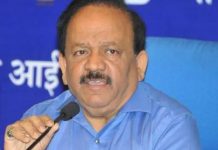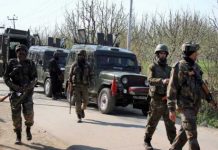In his chamber, with the scowling portrait of Che Guevara — another doctor-revolutionary — looking on, Goon tells me the story of his life in snatches. His politics are a major motivation; Binayak Sen, who worked with him in Shaheed Hospital, says that he is “a political worker whose chosen field of work was medicine”. Graduating from Kolkata’s Medical College in 1983, Goon wasn’t particularly interested in the traditional medical professional curve of post-graduation followed by a profitable practice or a secure government job. He had been deeply involved in student politics, most notably in the junior doctors’ strike of 1982 against the appalling conditions in the Medical College hospital, which is often the only option for quality healthcare for Kolkata’s poor. He describes himself as having been academically average, but committed to the role of medicine in improving society. As part of the Democratic Students’ Association, a politically unaffiliated student party which controlled the Medical College Student Union during the turbulent years from 1977 to 1983 — where “there was turmoil in every sphere of life”— he had spent his college years clashing with university authorities as well as the newly-elected Left Front government, while also providing free medical check-ups in the slums of Kolkata.
His friends Ashish Kundu and Saibal Jana, contemporaries at the National Medical College in Kolkata, had already begun working at the Shaheed Hospital with Binayak Sen and Pabitra Guha. Established by the Chhattisgarh Mines Shramik Sangh (CMSS), a union of iron-ore miners in Dalli-Rajhara, the hospital was unique for being a workers’ initiative after Kusum Bai, a vice-president of the union, died in childbirth due to lack of natal care. Jana, who read an article on the hospital in Sunday magazine and joined in 1982, eventually becoming head of the hospital, says the refusal by the union to seek outside help and run it themselves causes people to think of the hospital as their own. “Trade unions care only about the eight hours that workers spend at work, but the CMSS felt they should take all 24 hours into account.” A portrait of CMSS founder Shankar Guha Niyogi, assassinated in 1991, also hangs at the hospital in Chengail, as do those of Dwarkanath Kotnis, Norman Bethune and Dhiranjan Sen, doctors whose lives have inspired Goon. Also displayed prominently are the credentials of the medical staff, presumably to counter the questions of legitimacy that are invariably asked. Questions that were asked when doctors at Shaheed Hospital noticed a cholera outbreak in 1984, but their claim was rejected by the government, Jana says, because theirs was a workers’ hospital.
It was at Shaheed Hospital that a number of the practices Goon implements in Chengail were first attempted. The World Health Organisation (WHO) had published its first List of Administrable Drugs in 1977, and Dalli-Rajhara became a laboratory for its execution. The list, which specifies a certain number of medicines that are necessary and sufficient to “satisfy the healthcare needs of the majority of the population”, was adopted by the hospital, which only prescribed drugs that were included, mostly in the generic form. The WHO list began a national debate on essential medicines; a number of developing countries immediately banned all other formulations, but India did not, allowing the continued sale (and prescription) of unnecessary drugs. The Indian government would eventually bring out its own National List of Essential Medicines in 1993, but the list merely enumerates which drugs must be accessible, and is rarely enforced. This, Goon says, means that though simple, single-ingredient medicines exist that can cheaply treat most illnesses, they are not always made available, and the patient is forced to buy expensive, unnecessary formulations. The hospital at Chengail, like the one at Dalli-Rajhara, prescribes generic drugs, which cost as little as a tenth of the market price for brand-name pharmaceuticals. “These drugs aren’t different from commercial ones,” he says. “The companies buy the same medicines and mark up the price.”
Another measure that continues in Chengail is the focus on primary healthcare. Goon, who is trained in most complex surgeries, finds general practice much more satisfying. “Surgery is a really romantic thing,” he said in an earlier interview, “You get to go into the operating theatre and come out a hero. But this isn’t what I want to do anymore. There is so much one can do with a rational system of allopathic treatment.” No one is turned away at the hospital — those who can’t pay even the meagre fee he charges are treated for free, while those with ailments for which the hospital isn’t equipped are referred to other centres, where their treatment is subsidised — and days when he works from dawn to midnight are not uncommon.











